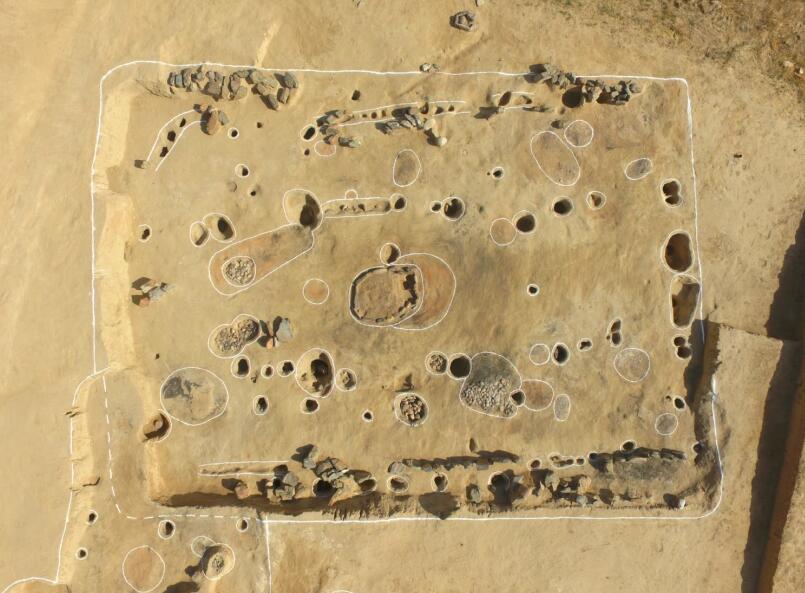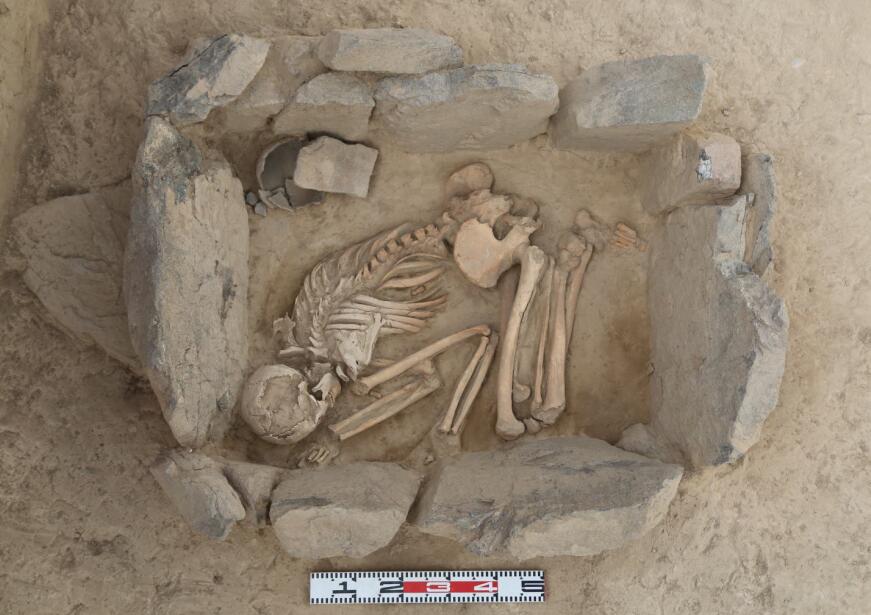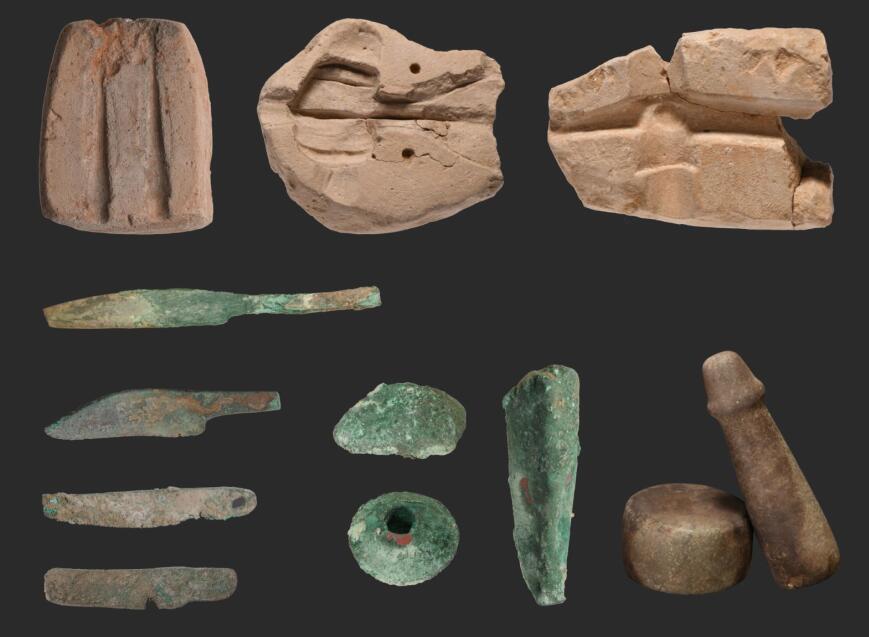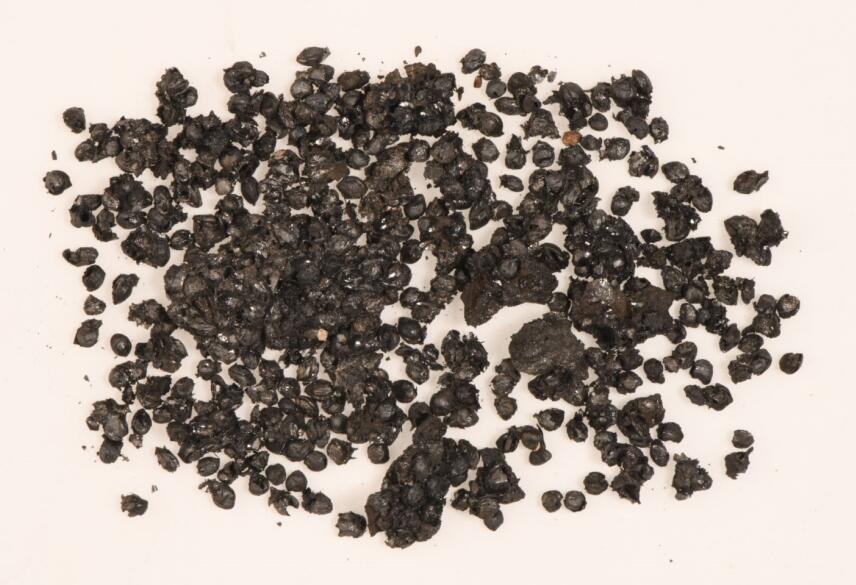The Jirentai Pass Site is located at the mouth of the Jirentai Valley in Nilka County, Ili prefecture, Xinjiang Uyghur Autonomous Region. The site is consisted of two parts, the Residential Area and the Platform Area. The discovery of Jirentai Pass site discovered because construction was planned there in 2015. In 2015, 2016 and 2018, the archaeology team conducted three excavations at the site. It is the largest and earliest settlement remain of the Bronze Age found in the Ili River valley up to date, which provided important data for research the settlement formation and the establishment of the sequence of the prehistoric archaeological cultures in this area.

Large-scale house foundation F2
Residential Area
The excavation uncovered areas of 4500 square meters in total, from which 37 house foundations and more than 300 features such as kiln, hearth (fire place), ash pit and smelting remain were unearthed, and over 1000 artifacts were recovered. In addition, abundant traces of coal burning evidence has been found, including coal, coal dust, cinder, unburned coal and so on.
Most of the house foundations were distributed on the east part of the terrace, While an independent large-scale house foundation was on the west part. Six are larger ones with areas ranging from 100 to 400 square meters in wooden frame semi-subterranean construction. Thirty-one smaller house foundations with areas ranging from 20 to 60 square meters in both semi-subterranean and ground construction.

Tomb M57
There were six kilns, in which two in the shape of spoon (numbered as Y4 and Y5), consisting of kiln chamber and fire tunnel. There were 40cm charcoal layer deposit inside the chamber. According to its structure and assemblage, we speculated that it could have been used for firing or storaging charcoal.
Nine tombs dating back to the Bronze Age, in the type of stone cist and earthen shaft pit. All of the tomb owners were flexed on one side , several burial gift such as plain flat bottom pottery jar, bronze mirror with handle, bronze era rings etc. The potteries and stone-tools took the majority of burial offering, few bronze ware, bone-tool and iron ware were found. Besides, some clay mould and stone mould that were related to bronze casting, as well as a large amount of carbonized broomcorn millet, millet, barley were found.

Assemblages such as clay mould, bronze knife and so on.
Platform Area
The Platform Area is 1km north to the Residential Area, In 2018 a trial excavation took place and what was essentially of 120 square metres was found, the outside part was build by stone block. For the inside part, stone walls and filler layer were found. Based on the relics and dating result, the platform is coexist with the Residential Area.

Carbonized millet seeds found in F27
Academic Significant
The three-year exploration and excavation at Jirentai Pass Site had made a series archaeological achievement, mainly in the following aspects:
1. Confirm the layout and the functional division of the settlement. The large-scale and complex settlement was made up of Residential Area and Platform Area. Consideration of the 400 square meters house foundation and magnificent stone platform, it is inferred to be one of the core area back to Bronze Age in the Ili River valley.
2. This earliest findings show that coal as a fuel was used throughout the history of the site. The discovery of this source of energy is monumental in the human history of energy use, and shows the finding has international significance
3. Over 2,000 carbonized millet seeds found at the site. Western grains such as barley and wheat were also found at the site in smaller amounts, which provided inspiring new angles on how grains from the East and the West spread. (Translator: Zhang Chen)





